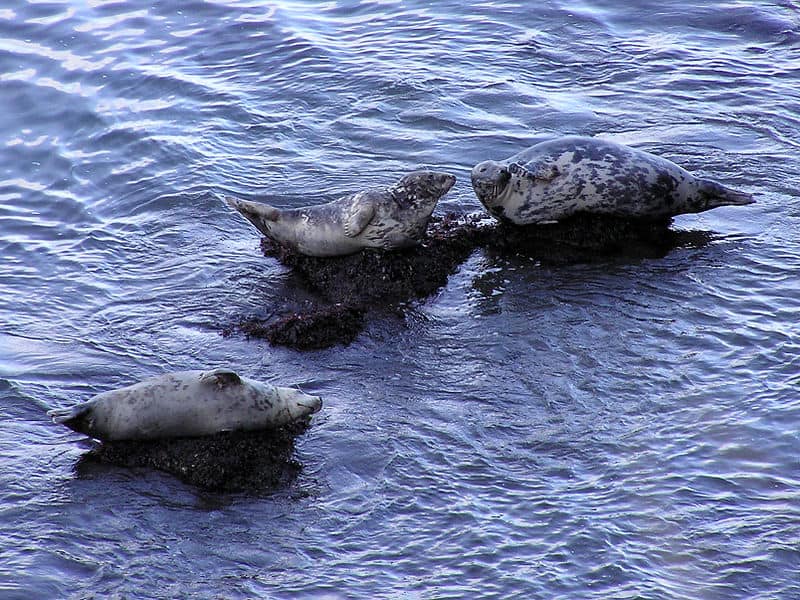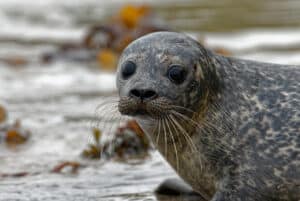A seal is a marine mammal that belongs to the family of Pinnipeds. They are known for their sleek and graceful bodies and can be found in many different sizes, ranging from large elephant seals to smaller species such as harbor seals. Seals live primarily in cold waters along coastlines, although monk seals like tropical water. They feed on fish, crustaceans, mollusks, and other small aquatic animals. Some species even venture onto land during low tides or at night to search for food. Seals have adapted well to living on land and in water due to their thick fur coats, keeping them warm while swimming or resting on ice floes.
A Group of Seals
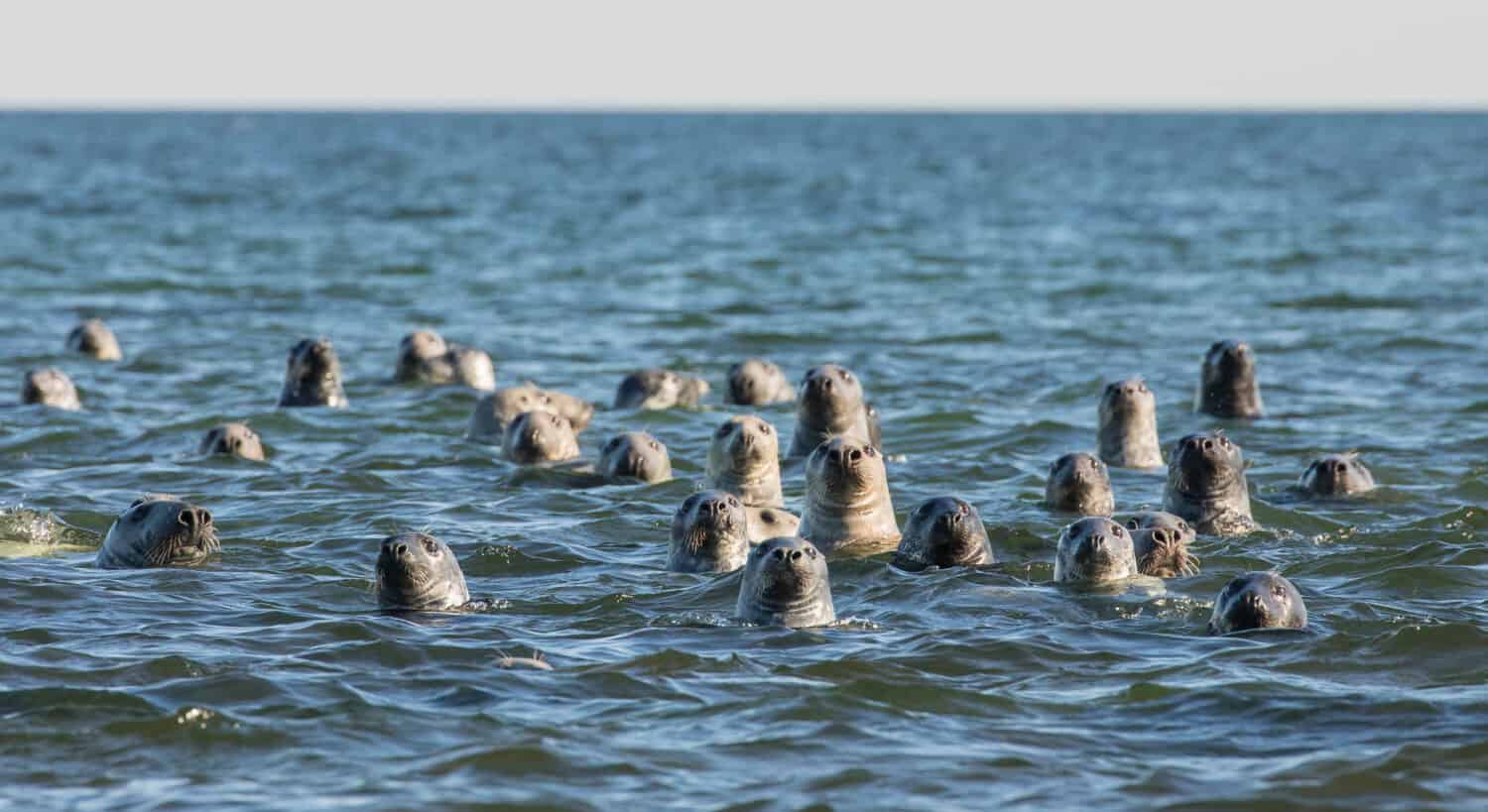
What is a group of seals called? This article gives the answer!
©F-Focus by Mati Kose/Shutterstock.com
A group of seals is known by many different collective nouns, depending on the species and type of seal. The most common collective noun for a group of seals is a herd or pod. A pod can consist of anywhere between two to several hundred individuals. These seal pods often stay together for extended periods. Other collective terms used to describe a group of seals are rookery, bob, harem, and colony. In addition, some people refer to groups of seals as “a plump of seals” when it comes to larger aggregations found in breeding colonies.
Group Size
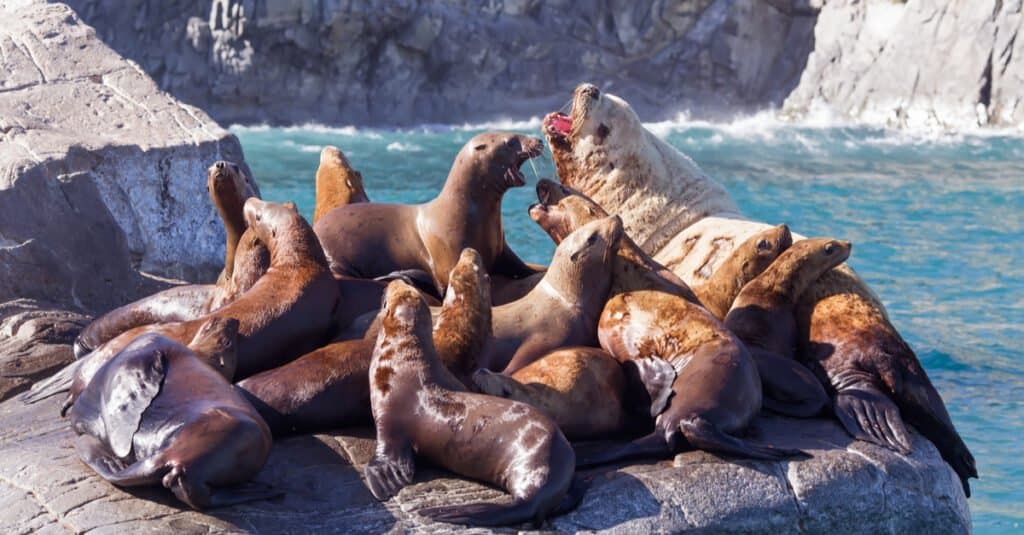
Seals can be solitary or social, depending on the species.
©Alexander Machulskiy/Shutterstock.com
Are seals herd animals or solitary animals? This is an interesting question, and the answer depends on the species of seal. Generally speaking, most pinniped species (the family containing seals, sea lions, and walruses) are considered to be semi-social creatures that form large colonies but don’t live in permanent groups. Seals will typically travel alone or in small groups when they leave the safety of their colony. However, they will often congregate with other seals during mating season.
In addition to this behavior, different seal species can also exhibit varying levels of sociality – some exhibiting more complex social behaviors than others. For example, elephant seals tend to form harems with a dominant male surrounded by multiple females, while researchers observe grey seals forming loose “cliques” for certain activities such as resting or basking in the sun together. No matter what size group a particular seal may choose to join up with at any given time, one thing is clear – these fascinating marine mammals always have a place within a larger community!
Group Behavior
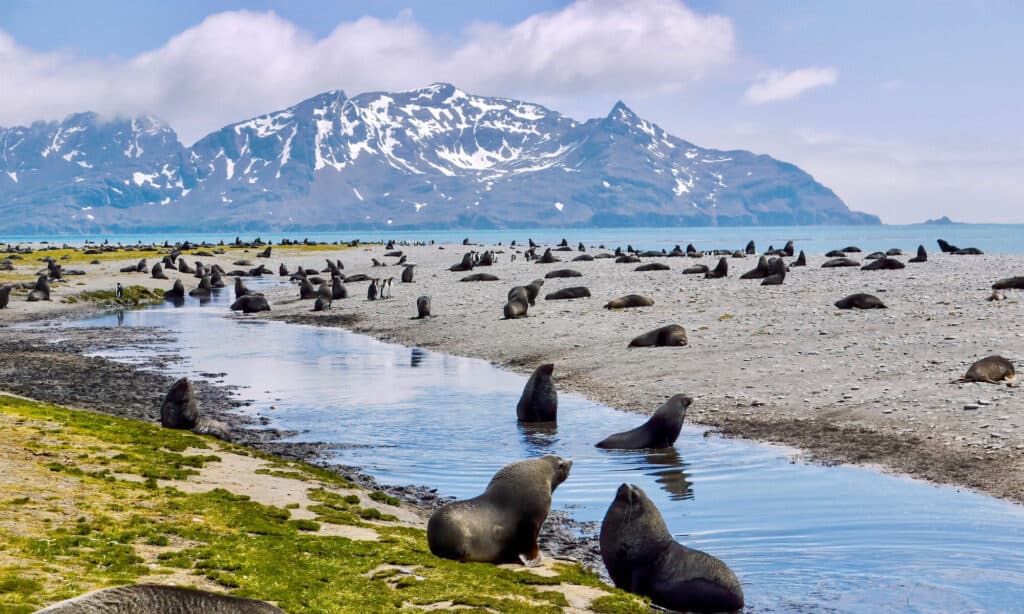
Researchers believe seals live in groups for protection and mating opportunities.
©iStock.com/Cheryl Ramalho
Seals are social animals and often live in groups, though usually not permanently. The size of these groups varies, but most commonly consists of 10-100 individuals. Some species also form larger colonies with hundreds or even thousands of seals. Group behavior among seals is thought to provide protection from predators and increase mating opportunities. They engage in activities such as “hauling out” (resting on rocks or shorelines), sunbathing, fighting for dominance within the group, and courtship behaviors such as vocalizations, playfighting, and chasing each other around. In addition to providing protection against predation, groups can help facilitate cooperative feeding strategies by sharing information about food availability among group members.
Courting and Mating

Seal mating rituals depend on the species.
Courtship and mating rituals among seals vary depending on the species, but they all share some common behaviors. For example, male seals will compete for mates by displaying their strength and agility in a series of physical challenges such as fighting or vocalizing. During these displays, males may also use scent to attract potential mates. After selecting a mate, courtship behavior includes frequently touching each other with their flippers or swimming together in close proximity. Once mating has taken place, the pair is typically monogamous until the breeding season ends.
Reproduction and Parenting
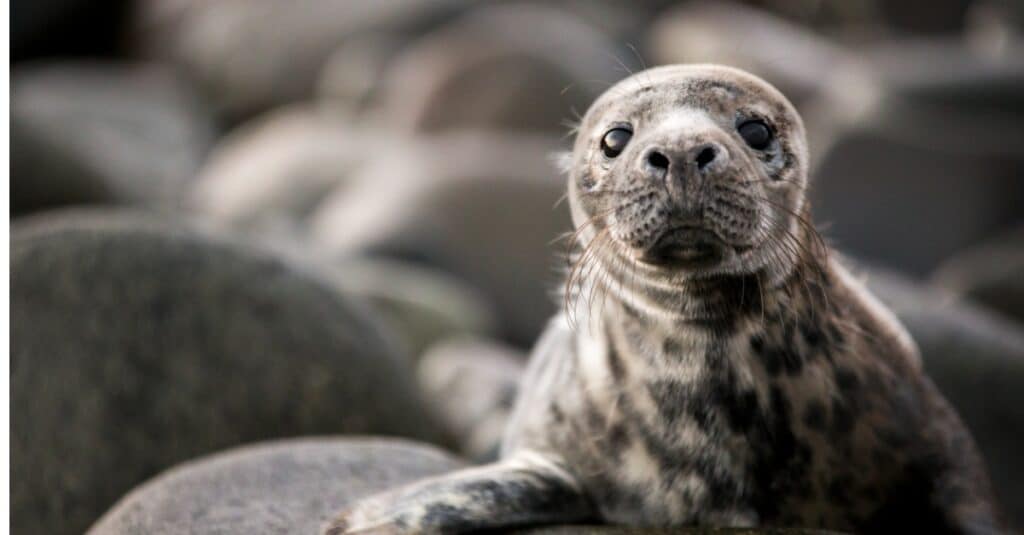
Female seals give birth to a pup a year.
©iStock.com/Matthew Hale
Seals are mammals, and they reproduce through sexual intercourse. The female seals will give birth to one pup per year, usually during the spring months of April or May. The gestation period for a seal is around 11-12 months long. Immediately after giving birth, the mother seal will nurse her pup for varying lengths of time. For example, fur seals nurse their young for three years, while eared seals nurse for 7-11 months.
Male pinnipeds generally have little involvement in parenting their offspring. However, walruses may sometimes assist young who struggle to swim and have looked after orphans. Additionally, male California sea lions have been seen guarding swimming pups against potential harm. On the other hand, males can also be a risk to the safety of pups, as they can cause injuries or fatalities during fights in species that breed on land. Subadult male South American sea lions may kidnap pups from their mothers to practice controlling females. Female New Zealand sea lions migrate to more secure areas to protect their pups.
Group Communication
Pinnipeds, such as seals, can make various noises, including rasps, creaks, trills, clicks, whistles, grunts, and barks. There is evidence of an ultrasonic call made by a captive leopard seal underwater, and northern elephant seals are known to produce infrasonic vibrations. These sounds can be heard both in the air and underwater, with eared seals being more vocal on land and earless seals being more vocal in water. Antarctic seals tend to be louder on land or ice due to a lack of predators like the polar bear. Generally, male vocals are lower in frequency than female seals.
Vocalizations are especially pertinent during the breeding seasons for seals, as they use them to communicate with each other about their hierarchy and potential mates. Male elephant seals demonstrate dominance by issuing loud drum-like threats and claps that have been known to be modified depending on their probosci’s length. Male eared-seals make well-known whistles, growls, barks, and roars in order to attract females. When looking for mates, walruses possess a unique communication style – they can create gong-like noises or even more melodic tones by inflating their throats. Overall, seals utilize vocalizations primarily during mating season to distinguish themselves from others in hopes of finding the perfect mate!
Group Hunting and Eating

Seals hunt alone and in groups.
©iStock.com/mzphoto11
Pinnipeds, such as seals, can hunt either alone or in groups. When they hunt alone, they usually look for food in rivers, bays, and coastal waters. However, the northern elephant seal is an exception to this as it hunts fish in the open ocean. Walruses tend to hunt by themselves, but they can be found close to other walruses in small or large parties that dive and resurface together. When large schools of fish or squid are in the area, certain eared seals will work together to locate and herd their prey. In addition, some species of seals, like the California and South American sea lions, may forage alongside whales and sea birds.
Group Protection
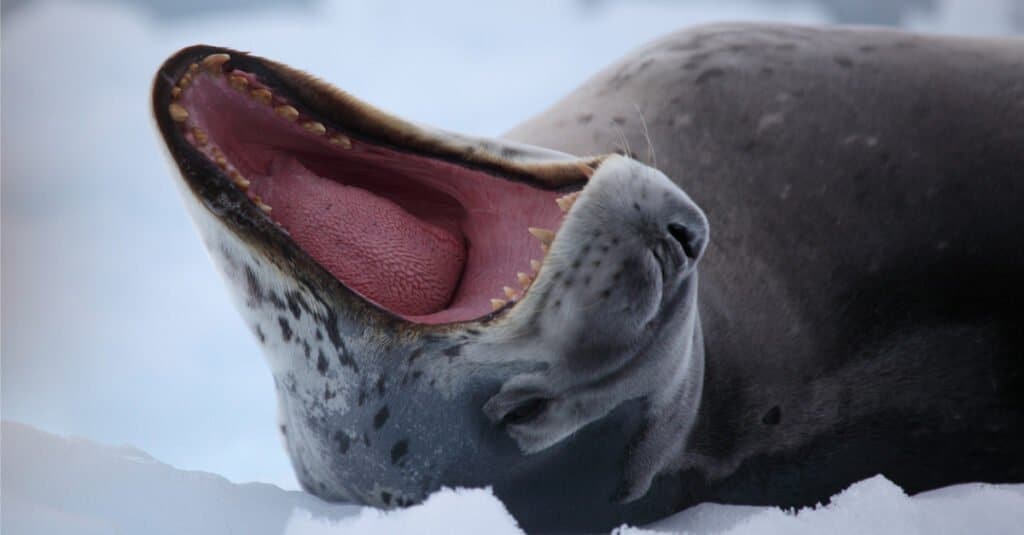
Seals have sharp canines that can seriously wound an attacker.
©iStock.com/MogensTrolle
Grouping together is a common form of protection for pinnipeds, like seals. They have sharp canines which allow them to inflict serious wounds on attackers – an adult walrus can even kill polar bears! Northern elephant seals dive out of the reach of orcas
and white sharks when they are out at sea. In contrast, seals living in Antarctica don’t need to worry about terrestrial predators, so they spend more time lounging on the ice than their Arctic counterparts. Arctic seals use more breathing holes per individual, seem less relaxed when hauled out onto land, and rarely defecate where they may be vulnerable. Ringed seals rely on their dens or snow caves as a protective shelter from potential predators.
Population and Conservation
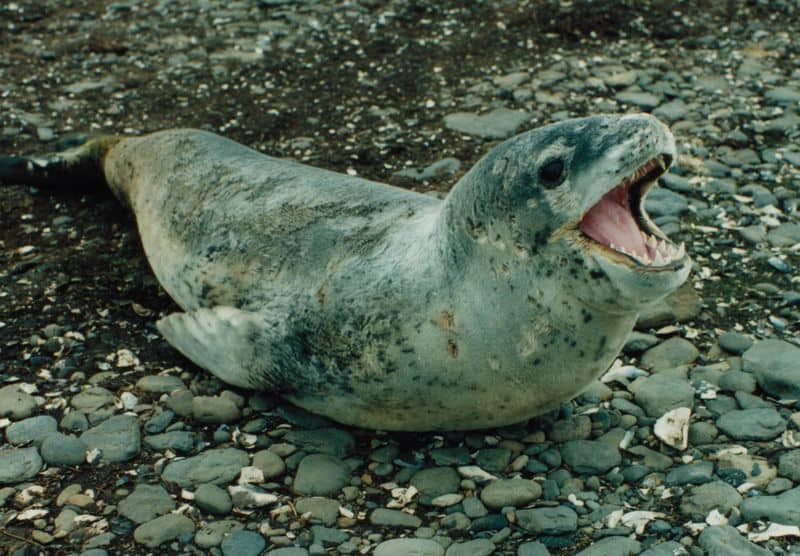
Seals need protection as they face serious threats from humans.
The global population of seals is an estimated 5 million individuals. However, their numbers have been decreasing due to human activities such as hunting, entanglement in fishing nets, and marine pollution. As a result of this decrease in population size, there has been an increasing focus on conservation efforts for seal populations over recent years. Conservation measures include protecting important breeding habitats by creating Marine Protected Areas (MPAs). Additionally, some countries feature laws that protect specific groups of seals against hunting or harassment. In conclusion, it is clear that although seal populations are still plentiful globally, they are facing serious threats from human activities and require continued protection if we wish to ensure their future survival.
The photo featured at the top of this post is © Alexander Machulskiy/Shutterstock.com
Thank you for reading! Have some feedback for us? Contact the AZ Animals editorial team.



